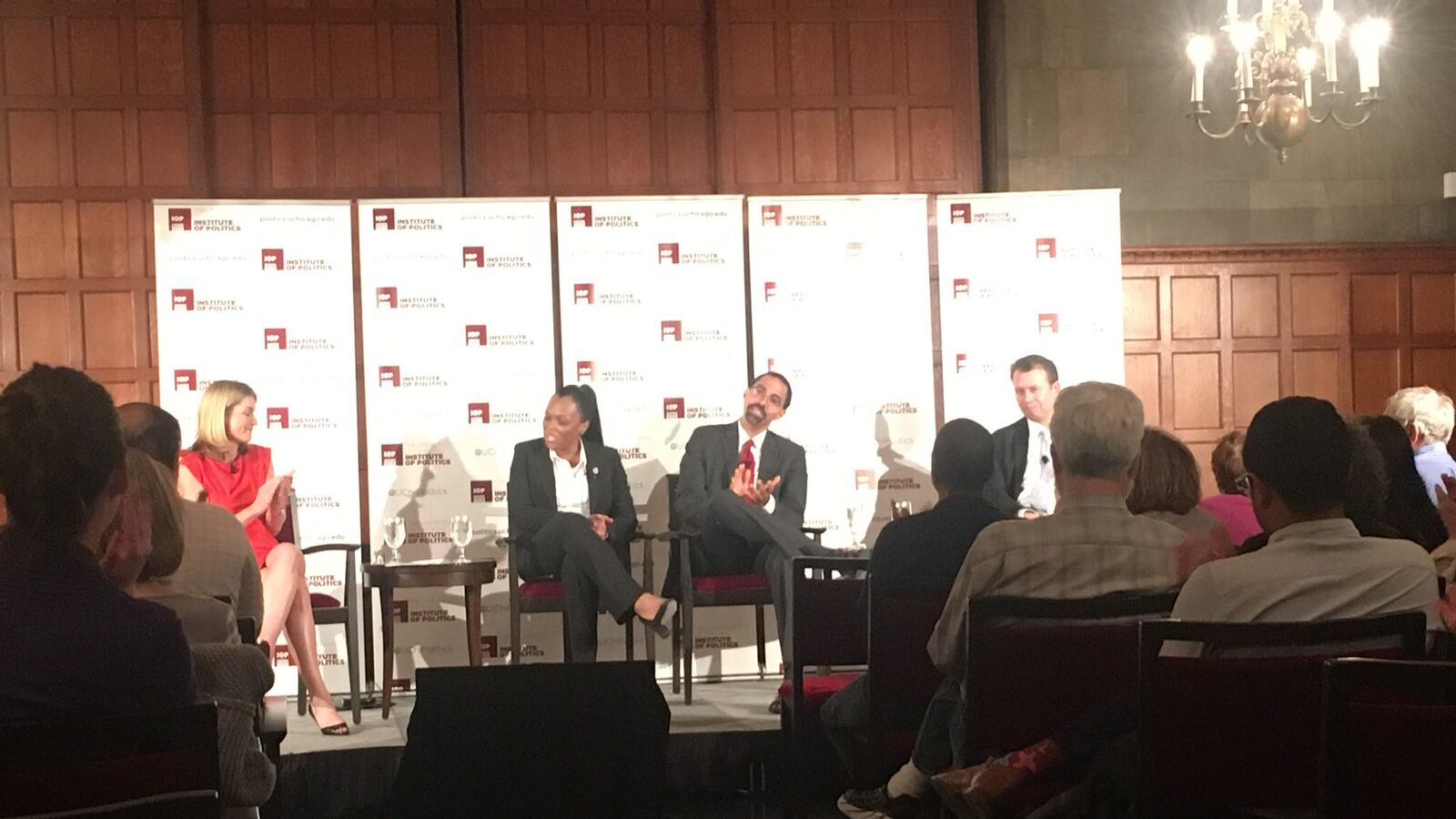If establishing an elected school board in Chicago means that a single mom from Englewood can win an election and help directly run schools, schools chief Janice Jackson said, “sign me up.”
“It’s not a silver bullet, it has to be done in a thoughtful way, and we have to get at what the ultimate goal is, which is more transparency and involvement from the community,” she said. But, she warned, “you could end up with expensive elections that don’t benefit students” and a board controlled by private interests that creates more bureaucracy.
Jackson’s comments came Monday at the University of Chicago’s Institute of Politics, where she discussed the future of American schools on a panel with another Chicago Public Schools product, Pedro Martinez, superintendent of the San Antonio Independent School District. Both leaders oversee districts that have seen rapid academic growth in recent years but still wrestle with persistent gaps in achievement and college enrollment between black and Latino students and their white and Asian peers, like a lot of American school districts.
Jackson touted increases in Chicago’s graduation rates, and its rates of college enrollment and completion, but acknowledged that the city’s public schools must continue to work to boost achievement of black and Latino students.
As if hedging her endorsement of an elected board, she noted: “We have to look at the progress that CPS has made under an appointed school board.” Mayor-Elect Lori Lightfoot, who takes office in May, supports establishing an elected school board in Chicago, which would require changing state law.
Related: Lori Lightfoot is Chicago’s next mayor — which means big changes are coming to schools
Martinez, a former chief financial officer at the Chicago district, now runs a district that serves about 50,000 students. Like Chicago, the district is overwhelmingly black and Latino, serving a city that is one of the most segregated economically. Over 90 percent of students receive subsidized meals, and 53 percent come from single-parent households, many with parents who didn’t finish high school or are functionally illiterate, said Martinez, a graduate of Chicago’s Benito Juarez High School.
He touted his district as one of the fastest-improving in Texas, with rising rates of high school graduation and college enrollment. Martinez said the district is trying to help teachers improve relationships with its high-needs student population.
For perspective, former U.S. Secretary of Education John King said the U.S. has made a lot of progress in the past decade, especially in raising graduation rates, increasing the number of “quality pre-K” seats, and boosting African-American and Latino college enrollment.
The problem, he said, is that the country’s progress is “pretty marginal compared to our international competitors who are making much more progress relatively.” He highlighted persistent racial achievement gaps and the economic consequences of not closing them.
“If we fail to educate low-income students of color effectively, we have no future as a country,” King said.
Jackson touted Chicago’s mindset of “post-secondary as a North Star,” pointing toward the work the district has done emphasizing its freshman on track metric, prioritizing graduation and college enrollment, focusing on principals and using data. She said that it’s important to balance between holding teachers accountable and empowering them, but that access to high quality curriculum in every school was a big goal that could improve on the district’s progress.
Jackson acknowledged financial constraints to creating the equitable vision she has for the school district, namely a lack of state funding. She also acknowledged a problem in the mindsets of some in the school system that being in close proximity to white and wealthy people equals a good education. For example, she said, Brooks College Preparatory High School in Roseland is a nationally recognized Blue Ribbon School, but many parents still won’t send their kids there, she said, “because it’s mostly African-American.”
“We’re not going to spike the ball at the 20-yard line,” she said. “We still have a lot of work to do.”

